Travel Tour to Austria
Tourism culture and History tour
Austria overview
Under the domination of the powerful dynasty of the Habsburgs, Austria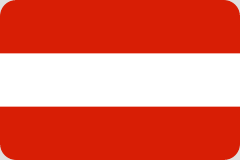 became one of the most important powers of continental Europe between the fifteenth century and early twentieth century. At present, its political role has been reduced to a secondary place within the European Union, but there are few countries that, like her, are a tourist destination throughout the year, and its imposing Alps that can be practiced in many winter sports also has one of the richest and impressive architecture of the whole continent and a musical tradition unmatched.
became one of the most important powers of continental Europe between the fifteenth century and early twentieth century. At present, its political role has been reduced to a secondary place within the European Union, but there are few countries that, like her, are a tourist destination throughout the year, and its imposing Alps that can be practiced in many winter sports also has one of the richest and impressive architecture of the whole continent and a musical tradition unmatched.
Austria best time to travel
The summer tourism and winter sports make Austria a vacation destination all year round. July and August are the peak season, when the number of visitors is higher, as did prices. In cities, temperatures amount significantly, and many of its famous institutions closed during these dates. During the winter, reduces the number of visitors in the cities and thus the price of accommodation, except at Christmas and Easter. From December to late March will come to winter sports, and Christmas, New Year and February periods of more influx of tourists. Between April and May and in November the stations are crowded alpine leave until, in June, beginning of spring and the Alps are covered in wildflowers.
Austria Festival & Holidays
Music festivals take place continuously throughout the year. New Year's concerts in Vienna represent their point of departure. In February, the Faschich or Vienna Carnival is celebrated with parades in the streets and popular dances, followed by Corpus Christi (the second Thursday after Pentecost), which was announced more carnival, some in the area of Salzkammergut lakes. The International Festival of Vienna, between May and June, offers a varied program of entertainment and is considered one of the most important events of the year. On June 23 the sky was illuminated by bonfires during the celebrations of the Summer Solstice night and, between July and August is held the International Festival of Salzburg, which includes much of the repertoire of the son of the city, Mozart. The National Day is October 26, when izan flags across the country. Finally, the December 6 is celebrated the feast of Saint Nicholas, with a parade heralding the start of Christmas.
Austria Attraction & places
Vienna
The Austrian capital symbolizes the glorious legacy of the dynasty of the Habsburgs, who controlled much of Europe for more than six years. Despite being a city full of architectural gems and an impressive musical past, in recent years tourism has been reduced to Viennese travelers older. Fortunately, today the city has returned to retrieve their grace and enthusiasm, developing an important role as ambassador of Austria in the European Union, which together with its tradition and culture are drawn as a uniquely attractive to be visited.
The city experienced its glory years as a cultural center of Europe during the eighteenth and nineteenth centuries. Most of the architecture can be seen today is due to the efforts of Franz Joseph I to create a city that reflects the power of the House of Austria. For this, the Emperor ordered the demolition of some of the many existing fortifications, enabled the land surrounding the Innere Stadt (city center), and between the years 1858 and 1865, ordered the foundation of the Ringstrasse (Ring street). In the following decade, began to build the most impressive buildings that comprise this circuit.
Not far away, stands the Imperial Hofburg Palace, residence of the Habsburgs until 1918 that houses many treasures of the Austrian cultural heritage. It consists of Agustina church of the fourteenth century, the ostentatious real units, the royal chapel where the Boys Choir of Vienna Singers sing Mass on Sunday, the Imperial Treasury, which includes the imperial crown jewels of the Holy Roman Empire Germanicus, the National Library, the Baroque Prunksaal room and a magnificent collection of old 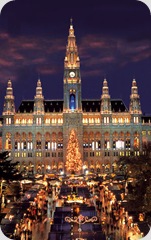 musical instruments.
musical instruments.
Also worth visiting the Academy of Fine Arts, which hosts the Masters gallery exhibiting the works of Danish and Flemish painters of the seventeenth century, such as Rubens and Van Dyck. The building that houses the museum itself is another precious piece of art. Will require more than one visit to admire all the details, including ceilings, beautifully decorated. The Sigmund Freud Museum, located at the place where he lived and worked psychiatrist before emigrating to Britain retains furniture, antiques and personal belongings, documents and original photographs.
Prince Eugene of Savoy commissioned Johann Lukas von Hildebrandt to design the Belvedere Palace, one of the world's most beautiful baroque. The upper floor houses the Austrian Gallery of the nineteenth and twentieth centuries, among other shows the well-known work of Gustav Klimt, The Kiss. Baroque Schönbrunn Palace, summer residence of the Habsburgs, its interior is decorated in accordance with the Rococo style and its many rooms are the Hall of Mirrors where Mozart performed his first concert at 6 years, and Lounge Napoleon, which interestingly exhibits a lark dissected.
Finding affordable housing can be a daunting task, especially at Easter, Christmas and summer holidays, so we recommend booking as early as possible. The elegant area of the city center is an ideal place to stay, due to its proximity to places of 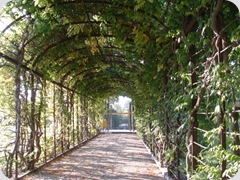 interest, but is expensive because it lacks hostels. Between the Ringstrasse and Gürtel sector pensions and hostels can be found at affordable prices. To eat for little money, it is advisable to turn to the northwest of the city center, near the university, and nightlife is in the area near the central canal of the Danube, near Ruprechtsplatz, Seitenstettengasse, and Rabensteig Salzgries, known as the Bermuda Triangle by the large number of pubs and clubs hosting.
interest, but is expensive because it lacks hostels. Between the Ringstrasse and Gürtel sector pensions and hostels can be found at affordable prices. To eat for little money, it is advisable to turn to the northwest of the city center, near the university, and nightlife is in the area near the central canal of the Danube, near Ruprechtsplatz, Seitenstettengasse, and Rabensteig Salzgries, known as the Bermuda Triangle by the large number of pubs and clubs hosting.
Salzburg
Austrian Baroque center and birthplace of the great composer Wolfgang Amadeus Mozart, Salzburg offers a unique scenery, being surrounded by mountains and divided by the Salzach River, near the German border. Its historic center was built during the reign of the Prince Archbishops in the late sixteenth century and early seventeenth and the style of its architecture is based on the Italian Renaissance. Its skyline lost countless medieval towers shaped needle, domes, steeples and towers. The old town's baroque masterpiece, is situated on the south bank of Salzach and consists of beautiful churches, plazas, courtyards and fountains. Mozart's footprint is maintained in every corner of this city, in museums, houses, squares, chocolates, liqueurs ...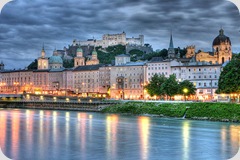
Hohensalzburg Castle, built in 1077, is the best preserved fortress in Central Europe and is considered one of the symbols of Salzburg. Among its attractions is its torture chambers, state rooms, a tower and two museums. East of downtown is the impressive Museum of Natural History with its permanent exhibition of wildlife and interactive exhibits on Physics. Another point of interest lies in the catacombs of the cemetery of the abbey of St. Peter, the ninth century.
If the traveler seeks to discover the musical Salzburg, we recommend a visit to Mozart's birthplace into a museum, and you can see where you used the violin in his childhood, his concert violin, his clavichord, piano, portraits and correspondence of family. The International Summer Festival, held during July and August, honors the work of the Austrian musician.
A 4 km south of Salzburg, is the palace of Hellbrunn, construction of the seventeenth century baroque building that he ordered the bishop Sitticus Marcus. In the vicinity of the palace outstanding and ingenious hydraulic water sources with little tricks, which enabled visitors to soak unexpected bishop's strange fascination.
San Antón
The Arlberg region is considered one of the country's best areas for skiing, and in 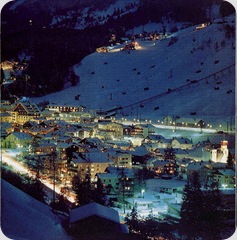 it, stand several seasons of winter. San Antón, located on the route by train from Bregenz and Innsbruck, is the largest and least elitist, with a relaxed atmosphere and great nightlife. In Gampe Kapall this season and has excellent slopes of medium difficulty and high, in addition to nursery slopes. Within the history of skiing, St. Anton is known as the place where, in the early twentieth century, Hannes Schneider first developed the style Arlberg, which is basically to ski with your legs together.
it, stand several seasons of winter. San Antón, located on the route by train from Bregenz and Innsbruck, is the largest and least elitist, with a relaxed atmosphere and great nightlife. In Gampe Kapall this season and has excellent slopes of medium difficulty and high, in addition to nursery slopes. Within the history of skiing, St. Anton is known as the place where, in the early twentieth century, Hannes Schneider first developed the style Arlberg, which is basically to ski with your legs together.
Caves Eisriesenwelt
Situated at an elevation of 1640 m near Werfen, Eisriesenwelt caves are the largest ice caves  open to the public of the world. Are over 40 km of passages explored and 30,000 cubic meters of ice. The entrance to the caves is controlled and accessed through a guided tour which lasts approximately 75 minutes running through huge caverns with elaborate ice formations and frozen waterfalls. The first exploration of the caves was made in 1879, but it was Alexander von Mork who conducted a more thorough recognition; its ashes rest in an urn in the Cathedral Cave. It is advisable to bring some warm clothing during scanning. The caves are open from May to October.
open to the public of the world. Are over 40 km of passages explored and 30,000 cubic meters of ice. The entrance to the caves is controlled and accessed through a guided tour which lasts approximately 75 minutes running through huge caverns with elaborate ice formations and frozen waterfalls. The first exploration of the caves was made in 1879, but it was Alexander von Mork who conducted a more thorough recognition; its ashes rest in an urn in the Cathedral Cave. It is advisable to bring some warm clothing during scanning. The caves are open from May to October.
Grossglockner Road
On the road to Grossglockner, you can walk a fine circuit of 50 km through the 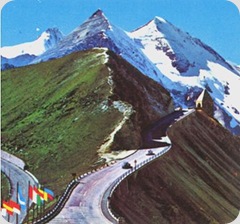 mountains and enjoy one of the most spectacular scenery in the country. The road was built between 1930 and 1935 on the former route of a major trade route between the Middle Ages Germany and Italy. The most beautiful part of the journey is up to the Hohe Tauern National Park, from where there are summits of many mountains, including the mighty Grossglockner, which arises through the broad language formed by the glacier Pasterze with its 3797 m altitude. It is a toll road and is open to traffic from May to November. It is recommended to start the trip in Zell am See and finalize it in Heiligenblut.
mountains and enjoy one of the most spectacular scenery in the country. The road was built between 1930 and 1935 on the former route of a major trade route between the Middle Ages Germany and Italy. The most beautiful part of the journey is up to the Hohe Tauern National Park, from where there are summits of many mountains, including the mighty Grossglockner, which arises through the broad language formed by the glacier Pasterze with its 3797 m altitude. It is a toll road and is open to traffic from May to November. It is recommended to start the trip in Zell am See and finalize it in Heiligenblut.
Rust
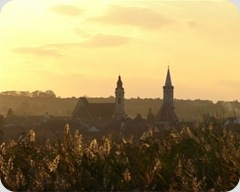
This town, whose name derives from the German word "elm" is known for its wine and storks. It is a prosperous city with beautiful homes that for centuries has built its economy in the production of wine. The storks arrive in the population at the end of March and, after breeding, they go in August. Many of its buildings have their roofs with a metal platform to attract these birds to build their nests there.
Gurken
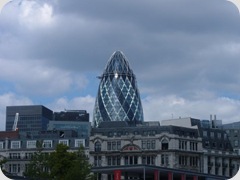 The beautiful cathedral of Gurken is one of the best examples of Romanesque architecture in Austria. It was built between the years 1140 and 1200, and its simple exterior structure, two giant spherical domes that crown the twin towers. Inside you will find the reticulated domes and most of its ornaments are of baroque or rococo. The altar belongs to the early Baroque and consists of 72 statues and 82 heads of angels. Gurken is located in the heart of Carinthia area, north of Klagenfurt.
The beautiful cathedral of Gurken is one of the best examples of Romanesque architecture in Austria. It was built between the years 1140 and 1200, and its simple exterior structure, two giant spherical domes that crown the twin towers. Inside you will find the reticulated domes and most of its ornaments are of baroque or rococo. The altar belongs to the early Baroque and consists of 72 statues and 82 heads of angels. Gurken is located in the heart of Carinthia area, north of Klagenfurt.
Mauthausen
The Nazis chose the small town of Mauthausen, site of known quarries in Upper Austria, to establish a concentration camp. The prisoners worked very hard on the granite quarry and often died in the so-called Stairs of Death, leading from the quarry to the camp. An estimated two hundred thousand prisoners died or were executed in this area between 1938 and 1945. Its museum features the history of German in this and other German concentration camps in Austria, illustrated with maps, artifacts used in the time and harrowing photographs. The visit included the barracks of the prisoners and the famous gas chamber.
Austria activities
Skiing is a sport deeply rooted in the Austrian tradition, with most of its inhabitants have a high level, which makes it appear to a beginner who is not. The most popular are the Tyrol and Vorarlberg, but also have good tracks the province of Salzburg, Upper Austria and Carinthia. Kitzbühel Lech and are the most exclusive ski resorts. Those who fit your budget, have a special aversion to crowds and a good physical preparation may find greater reward in skiing, which can be practiced in most parts of the Austrian territory, if there is enough snow and not many buildings.
There are thousands of miles of well marked paths for hiking and exploring the Alps. Kaisergebirge Mountain, north of Tyrol, is a favorite of climbers, but are advised not to climb alone and without the appropriate equipment, in addition to talking to the locals about the weather and avalanche risk . Both paragliding and hang gliding attract many fans, and most ski resorts can hire equipment and lessons. It is also possible to fly in a balloon, but the cost is high. The lakes of Salzkammergut and Carinthia offer the possibility to practice water skiing, sailing and windsurfing. It is highly recommended to join a cruise on the Danube river, especially for lovers of the works of Johann Strauss.
Austria History
The Romans settled in the territory that later became Austria until the end of the V. From the sixth century and because of its strategic location as a means of communication, various Germanic tribes invaded the area, as the Bavarians, who were later defeated by the Avars. In the year 803, Charlemagne befell the army and created the miser Ostmark (mark of the East) in the valley of the Danube, an area Christianised and predominantly Germanic. The Hungarians took over the country until it was reconquered in 955 by the Otón Grande.
Rudolf of Habsburg territory occupied in 1278 after defeating Otakar of Bohemia in the Battle of Marchfeld, this dynasty would remain in power until the beginning of the First World War. Their methods of territorial conquest focused on acquiring domains and a marriage. The junction of Philip of Habsburg, son of Emperor Maximilian I and Mary of Burgundy, and Joanna of Castile, a descendant of the Catholic Kings were born two sons, the eldest of them became Charles I of Spain in 1516, to change its title by Charles V Holy Roman Empire three years later, the youngest son, Ferdinand, became the first Habsburg who lived in Vienna and ruled Austria, Hungary and Bohemia. Charles abdicated in 1556, leaving the government of the Empire in the hands of Fernando I, and in 1555 resigned from the crowns of Castile, Leon, Aragon, Sicily and Sardinia in favor of his son Philip II. This triggered the split of the Habsburg dynasty into two distinct branches, the Spanish and Austrian.
In 1571 the emperor declared the freedom of worship, and most returned to profess Protestantism. However, in 1576 the new Emperor Rudolf II took the counter again and imposed Catholicism in much of the country. Fernando II in power, the pursuit led to Protestantism in the Thirty Years War, which began in 1618 and devastated much of Central Europe. The peace treaty signed at Westphalia in 1648. During the seventeenth century, in addition to its fight against Protestantism, Austria had an armed confrontation against Turkish and French. In 1683, Vienna was besieged by the Turkish army, but German and Polish forces Christians to move to intervene to end the Turkish southeastern Europe, these confrontations resulted in the Turks yield Hungary, Walachia, Bosnia and Serbia to the Alpine country. After the hostilities, they built a multitude of Baroque buildings and under the rule of Emperor Leopold I, a great lover of music, Vienna became a focus of attraction for performers and composers.
Empress Maria Theresa acceded to the throne in 1740 and ruled for over forty years, during which Austria became a modern state. During his reign, power was centralized, created a public service, the army was reformed and the economy, and a public education system. These developments were interrupted with the defeat Austrian troops against Napoleon in the year 1805. The conflict lasted until the European Congress of Vienna (1814-1815), after which Austria became the leading power of the Germanic Confederation. The policy of the country was characterized by its immobility, and Catholicism along with the aristocracy supported the conservative traditions. Revolutionary movements of 1848 generated by a liberal sentiment also broke out in Vienna, Italy and Hungary, but it would soon be suffocated. In 1866 Austria entered into war with Prussia, and after his final defeat, its territory was excluded from the new German empire unified by Bismarck, and was restricted to their domains Danube. The outcome of the Austro-Prussian War also led to the formation of an Austro-Hungarian Dual Monarchy in 1867, under the rule of Emperor Franz Joseph. After this stage, the country experienced a period of splendor, but its expansionist tendencies in the Balkans and the violent annexation of Bosnia and Herzegovina in 1908 led to the assassination of Crown Prince Franz Ferdinand in Sarajevo in June de1914. The attack sparked the First World War, when the Austro-Hungarians declared war on Serbia, an ally of Russia.
At the end of the contest was proclaimed the Republic of Austria and forced the country to recognize the independence of the states of Czechoslovakia, Poland, Hungary and Yugoslavia, along with Romania and Bulgaria, had been under the control of the House of Habsburg. The new republic suffered economic divisions that led new political formations, including the Austrian Nazis, supporters of the Nazi regime. In 1938 he joined the Third Reich after the invasion of German troops, annexation was supported by a national referendum that same year. During World War II, Austria suffered heavy bombardment, but in 1945 it had recovered the borders it had before the war. The Alpine country was divided into four zones occupied by U.S. troops, British, French and Russian, where it remained for a decade until it was declared neutral country.
During the postwar Austria struggled to restore its economic situation, and in 1972 established a free trade agreement with the EEC (now European Union). Except for the election of Kurt Waldheim, a former German army officer and former Secretary General of the United Nations for the presidency in 1986, the Austrian policy focused on achieving a consensus before resolving internal conflicts. In the late eighties, the increase in immigration from Eastern Europe, coupled with the political situation in the Eastern bloc, resulted in the increased popularity of the Liberal Party ideology and extreme anti-immigration. The recent influx of refugees from the former Yugoslavia has raised concern among the moderate parties.
The Austrian people broadly supported its entry into the European Union through a referendum in 1994, with the formal admission January 1, 1995. Since then, there remains a great debate among the public about the benefits of Union membership.
In the last general elections in 2000, the Liberal Party became the second political force, behind the Social Democrats to form coalition government with the Democrats. Both parties have 52 parliamentary seats each, while the Social Democrats have 65. Entry into the ultra-government party led by Jörg Haider, the xenophobic ideas, which led the other members of the European Union imposed diplomatic sanctions against Austria. In the municipal elections of March 2001, Haider's party lost almost one third of the votes while the Social Democrats won comfortably with. In the presidential elections of April 2004, the Social Democrat Heinz Fischer won 52.41% of the vote and won the presidency of the country. The reform of pensions and compensation to victims of holocasuto are topical issues.
In 2004, the irreverent Austrian writer Elfriede Jelinek won the Nobel Prize for Literature, in recognition of his poetic work force as "The Pianist."
Austria Culture
During the eighteenth and nineteenth centuries, composers from across Europe came to this country, attracted by the generous patronage of the House of Austria, Vienna and became a haven for classical music. In fact, many members of this dynasty were talented musicians, as Leopold I (composer), Charles VI (violin), Maria Teresa (bass) and Joseph II (harpsichord and cello). Teachers as Beethoven, Brahms, Gluck, Hayden, Mahler, Mozart, Schubert, Strauss and Schoenberg lived in the Viennese court. At present, institutions like the Vienna Philharmonic, the angelic choir Cantores Children Vienna, the Staatsoper (National Opera), the Musikverein and the Konzerthaus are incomparable.
Austrian architecture is characterized by its wealth of styles, ranging from the Romanesque to the more current flows. Met the gothic splendor between XIV and XVI centuries, as evidenced by the large number of imposing buildings with buttresses flyers, point of arches and ribbed vaults. St. Stephen's Cathedral in Vienna, is considered the masterpiece of the Gothic Austria. But the major influence in Austria was the stylistic Baroque. Following the Italian model, Fischer von Erlach created called the Austrian Baroque, whose best example is also illustrated by the National Library and the church of San Carlos in Vienna. Meanwhile, the Empress Maria Teresa distinguished the Rococo, a style that emerged as the renovation of the Baroque and is characterized by a very refined taste and a rich decoration, as can be seen inside the palace Schönbrunn in Vienna. Modern architecture is represented by the works of Friedensreich Hundertwasser, who joined in the residential blocks of straight lines, bright colors and contrasts, plus a very elaborate ornamentation, asymmetrical and organic, based on natural forms.
There are many fine examples of Gothic art, Renaissance and Baroque churches in Austria. The Biedermeier style, known for furniture under its parameters, was seen in galleries in spite of his bourgeois home, and even one of their representatives, the artist Michael Moritz Daffinger stressed in the world of music. Among the most famous Austrian painter Gustav Klimt stress, the highest representative of Art Nouveau and co-founder of the Viennese Secession, and the expressionist Oskar Kokoschka, but the most outrageous advertising is reserved for the Viennese Actionism, art collective created in the early sixties which was based on the performance to access the subconscious.
However, Sigmund Freud, founder of psychoanalysis, was one of the major influences in the world of art. Among his legacies as outstanding works The Interpretation of Dreams, The Ego and the Id, and the concept of penis envy, surrealism, symbolic language and complete a novel, and psychoanalysis. The great filmmaker Fritz Lang created masterpieces such as Metropolis, M, the vampire of Dusseldorf and New York while you sleep.
The traditional Austrian food is abundant and very diverse. Its most famous dish is the Wiener Schnitzel, the Viennese escalope, which now can taste all over the world. Other examples of Austrian cuisine are tafelspitz, beef cooked with garnish and schweinsbraten or knuckle roast. The beuschel are thin slices of calf's lung and heart, very tasty. Austrian pastries and cakes are known for their delicacy, the country's most famous dessert is the strudel, fruit cake, raisins and cinnamon, which are recommended together with a national cold beer or a glass of Austrian wine, another highlight is sweet exclusive Sachertorte, chocolate cake, created in the Hotel Sacher in Vienna
Austria Map





Post a Comment